#Global Infrastructure as Code (IaC) Market
Explore tagged Tumblr posts
Text
🚀 𝐏𝐨𝐰𝐞𝐫𝐢𝐧𝐠 𝐭𝐡𝐞 𝐅𝐮𝐭𝐮𝐫𝐞: 𝐓𝐡𝐞 𝐑𝐢𝐬𝐞 𝐨𝐟 𝐈𝐧𝐟𝐫𝐚𝐬𝐭𝐫𝐮𝐜𝐭𝐮𝐫𝐞 𝐚𝐬 𝐂𝐨𝐝𝐞 (𝐈𝐚𝐂)
GLOBAL INFRASTRUCTURE AS CODE (IAC) MARKET SIZE (2025 - 2030):
The Global Infrastructure as Code (IaC) Market, estimated at USD 0.8 Billion in 2024, is forecasted to reach USD 4.47 Billion by 2030, exhibiting a CAGR of 24.0% during the period from 2025 to 2030.
➡️ 𝐃𝐨𝐰𝐧𝐥𝐨𝐚𝐝 𝐒𝐚𝐦𝐩𝐥𝐞 :@ https://tinyurl.com/yrtr46u2
Infrastructure as Code Market Overview:
The process of managing and provisioning infrastructure through code, rather than manual methods, defines Infrastructure as Code (IaC). This approach simplifies the editing and distribution of configurations by generating configuration files with the user's infrastructure specifications. Consequently, it ensures consistent environments and mitigates haphazard, undocumented configuration changes through the codification and documentation of specifications. Similar to software source code files, configuration files are recommended for source control, as version control forms a critical aspect of IaC. Modularizing infrastructure through IaC allows users to automate the combination of various components. By automating infrastructure provisioning with IaC, developers no longer need to manually oversee servers, operating systems, storage, and other infrastructure elements during application development or deployment.
IaC offers several advantages such as cost reduction, decreased risk of human errors, enhanced consistency, elimination of configuration drift, and improved security strategies. Many regions, particularly in the Asia-Pacific area, are rapidly adopting IaC solutions due to these mentioned benefits. Hence, the Global Infrastructure as Code (IaC) Market is expected to witness a substantial CAGR during the forecast period.
Global Infrastructure as Code (IaC) Market Drivers:
The growth of the global Infrastructure as Code (IaC) market is propelled by the evolution of composable infrastructure.
Features like streamlined operations, scalable resources, and inherent data protection and recovery capabilities are anticipated to drive the adoption of Infrastructure as Code solutions. Currently, the full potential of composable systems is not entirely realized across industries. However, this is expected to change as buyers become more cognizant of the advantages and benefits of these solutions, owing to the efforts of leading infrastructure as code ecosystem companies. Presently, large enterprises are the primary users of infrastructure as code solutions.
➡️ 𝐁𝐮𝐲 𝐍𝐨𝐰 :@ https://tinyurl.com/26mbehde
The emergence of modern cloud architectures is another factor contributing to the expansion of the global Infrastructure as Code (IaC) market.
Modern cloud architectures offer benefits such as increased innovation, reduced costs, enhanced reliability, and accelerated time to market. However, managing cloud infrastructure has become more complex due to numerous APIs and loosely connected services. This complexity necessitates the use of infrastructure as code as the most effective solution. Infrastructure as code platforms empowers developers with complete control over programming languages, simplifying the management of dependencies in numerous cloud applications. Consequently, this factor is driving the demand for IaC solutions.
Global Infrastructure as Code (IaC) Market Challenges:
The global Infrastructure as Code (IaC) market faces challenges, primarily concerning the shortage of skilled professionals and the risk of human error. Some businesses may hesitate to adopt IaC and DevOps models due to the high level of technical proficiency required, necessary cultural and business practice adjustments, the risks associated with migrating existing solutions, or concerns about the qualifications of their teams.
Global Infrastructure as Code (IaC) Market Opportunities:
The global Infrastructure as Code (IaC) market presents lucrative opportunities through the adoption of DevOps tools and the embrace of IaC by small and medium-sized enterprises (SMEs). Businesses can gradually integrate DevOps capabilities and significantly enhance effectiveness and efficiency through the utilization of DevOps tools. Additionally, Infrastructure of Code (IaC) solutions aid small and medium-sized enterprises (SMEs) in optimizing their IT operations, reducing the likelihood of human error, and cutting costs.
COVID-19 Impact on the Global Infrastructure as Code (IaC) Market:
The outbreak of the COVID-19 pandemic had a substantial impact on the global Infrastructure as Code (IaC) market. Strict lockdowns, travel restrictions, and social distancing measures in numerous countries hindered the manufacturing capacities of many companies and led to a shortage of skilled workers. These disruptions affected the deployment of Infrastructure as Code (IaC) solutions, negatively influencing the market's growth. However, the shift to remote work and online operations by many organizations due to the pandemic-induced restrictions increased the demand for scalable and efficient cloud infrastructure solutions. The industry experienced significant revenue growth due to the rising demand for robust IT infrastructure and the increasing prevalence of virtual collaboration among corporate teams. Consequently, the global Infrastructure as Code (IaC) market encountered both challenges and opportunities during the challenging period of the COVID-19 pandemic.
➡️ Enquire Before Buying :@ https://tinyurl.com/mwh4z8av
Global Infrastructure as Code (IaC) Recent Industry Developments:
In March 2023, Ermetic, a provider of cloud infrastructure security solutions, announced enhancements to its Cloud Native Application Protection Platform (CNAPP). These enhancements enable customers to automatically identify and rectify risky or excessive privileges, compliance violations, and misconfigurations in Kubernetes clusters.
In February 2023, Nethopper.io, the pioneer of KAOPS (Kubernetes Application Operations Platform as a Service), expanded its support for CNCF Crossplane. This extension enables the automation of cloud infrastructure provisioning, management, and orchestration, extending the capabilities of Kubernetes clusters.
Global Infrastructure as Code (IaC) Market Segmentation:
By Component:
Tools
Services
In 2022, the tools segment secured the leading market share. The surge in market dominance can be accredited to the manifold benefits offered by IaC tools. IaC technologies proffer heightened consistency and swiftness, an optimized software development cycle, and diminished management overhead. Previously, data centers necessitated administrators for computing, storage, networking, and other functions, responsible for supervising and managing the hardware and middleware layers. With IaC, these varied roles are rendered unnecessary, allowing administrators to focus on selecting cutting-edge technologies for forthcoming major projects.
#Global Infrastructure as Code (IaC) Market#Global Infrastructure as Code (IaC)#Global Infrastructure
0 notes
Text
Demystifying DevOps: Harmonizing Development and Operations
DevOps Essentials: DevOps serves as a conduit for collaboration and heightened productivity between software development and IT operations teams. At its core, DevOps aims to streamline the software development lifecycle, ensuring the continuous delivery of top-tier software. Key tenets include automation, collaboration, and the implementation of continuous integration/continuous deployment (CI/CD) processes.
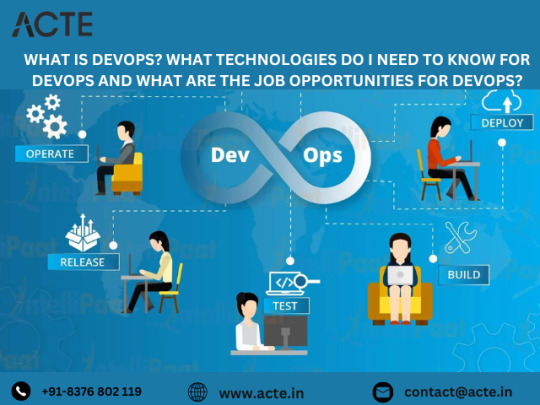
Unveiling the Core Tenets:
Collaboration: Breaking down silos to create a shared culture and responsibilities between development and operations teams.
Automation: Leveraging automated processes to eliminate manual tasks, reduce errors, and enhance efficiency.
CI/CD: Emphasizing continuous integration and deployment for swift and reliable software releases.
Diverse Career Paths in the DevOps Realm
1. DevOps Engineer: Role: Implementation and management of tools and processes for streamlined software development, testing, and deployment. Responsibilities: Collaborate across teams, optimize CI/CD pipelines, and ensure the efficiency of software delivery.
2. Site Reliability Engineer (SRE): Role: Concentration on ensuring the reliability, availability, and performance of systems through automation, monitoring, and incident response. Responsibilities: Implementation of robust monitoring solutions, automation of recovery processes, and improvement of system reliability.
3. Cloud Engineer: Role: Specialization in designing, implementing, and maintaining cloud infrastructure, often involving Infrastructure as Code (IaC) tools and cloud provider services. Responsibilities: Optimization of cloud environments, ensuring scalability, and managing infrastructure through code.
4. Automation Engineer: Role: Development of scripts and tools to automate manual processes, enhancing efficiency and minimizing human errors. Responsibilities: Identification of areas for automation, script creation, and monitoring of automated processes.
5. Release Manager: Role: Coordination of the release process, ensuring efficient and reliable software delivery with minimal disruptions. Responsibilities: Collaboration with development and operations teams, planning of release schedules, and overseeing deployment processes.
6. Security DevOps Engineer (DevSecOps): Role: Integration of security practices into the DevOps pipeline, ensuring security considerations at every stage of development and deployment. Responsibilities: Conducting security assessments, implementing security controls, and educating teams on secure coding practices.

Sustained Demand for DevOps Professionals: Unraveling the Factors
As organizations globally acknowledge the advantages of incorporating DevOps practices, the demand for skilled professionals in this field continues to surge. Several factors contribute to the perpetual demand for DevOps practitioners:
1. Efficiency Gains: DevOps practices significantly enhance efficiency by automating manual tasks, reducing errors, and accelerating software delivery. Organizations seek professionals who can optimize processes for maximum efficiency.
2. Continuous Improvement: The DevOps culture emphasizes continuous improvement. Companies value professionals who embrace a mindset of constant learning, adaptability, and a commitment to refining processes.
3. Collaboration is Key: The collaboration fostered by DevOps is invaluable. Companies are eager to bring in professionals who can bridge the gap between development and operations teams, fostering effective communication and shared goals.
4. Faster Time-to-Market: DevOps enables organizations to release software faster and more reliably. In a competitive landscape, companies strive to minimize time-to-market, making skilled DevOps professionals indispensable.
5. Scalability in the Cloud: The move towards cloud computing amplifies the need for DevOps expertise. Professionals who can navigate cloud environments, implement Infrastructure as Code, and optimize cloud infrastructure are in high demand.
A Roadmap to Success in the DevOps Journey: Navigating Practices and Transformations
1. Instill a DevOps Culture: Commence your journey by fostering a collaborative and innovative culture within your organization. Encourage open communication, shared responsibilities, and a commitment to continuous improvement.
2. Evaluate Existing Processes: Conduct a comprehensive assessment of current development and operations processes. Identify bottlenecks, communication gaps, and areas where automation can bring significant improvements.
3. Embrace the Power of Automation: Implement automation practices across the software development lifecycle. Automate build, testing, and deployment processes to enhance efficiency and reduce manual errors.
4. Establish CI/CD Pipelines: Lay the foundation for robust Continuous Integration and Continuous Deployment (CI/CD) pipelines. Ensure that code changes are seamlessly integrated, rigorously tested, and deployed consistently.
5. Dive into Containerization: Introduce containerization using tools like Docker. Containers ensure consistency across different environments and facilitate scalable and efficient deployment of applications.
6. Embrace Cloud Infrastructure: Contemplate the migration to cloud infrastructure to leverage scalability and flexibility. Familiarize yourself with leading cloud platforms and delve into Infrastructure as Code (IaC) tools.
7. Continuous Monitoring and Feedback Loops: Implement continuous monitoring practices to track the performance of applications and infrastructure. Establish feedback loops for swift issue detection and resolution.
8. Cultivate a Learning Culture: Encourage teams to actively engage in continuous learning. Stay updated on industry trends, participate in training programs, and foster a culture where learning is valued.
9. Cultivate a Robust Skill Set: DevOps professionals should develop a diverse skill set, encompassing automation tools, cloud technologies, security practices, and collaboration techniques.
10. Embrace Adaptability and Innovation: DevOps is a journey of constant evolution. Stay adaptable, experiment with new tools and methodologies, and innovate to meet the evolving needs of your organization.
Thriving in the DevOps Ecosystem: Conclusion
In conclusion, DevOps transcends being merely a set of practices; it's a cultural transformation that empowers organizations to deliver software efficiently and reliably. The diverse job opportunities within the DevOps landscape cater to professionals with skills ranging from automation and cloud engineering to security and collaboration.
Embark on your DevOps journey with the understanding that it's a continuous evolution. Stay curious, stay adaptable, and let your commitment to efficiency and collaboration guide you through the dynamic and rewarding world of DevOps. Best of luck on your path to unlocking the power of DevOps!
2 notes
·
View notes
Text
Cloud Security Market Emerging Trends Driving Next-Gen Protection Models
The cloud security market is undergoing rapid transformation as organizations increasingly migrate their workloads to cloud environments. With the rise of hybrid and multi-cloud deployments, the demand for robust and scalable cloud security solutions is growing. Emerging trends in cloud security reflect both technological evolution and the increasing sophistication of cyber threats. These trends are reshaping how enterprises secure data, manage compliance, and maintain trust in cloud-based systems.

Zero Trust Architecture Becoming a Core Principle
One of the most significant shifts in cloud security is the adoption of Zero Trust Architecture (ZTA). Zero Trust eliminates the traditional notion of a trusted internal network and instead requires continuous verification of user identities and devices, regardless of their location. With cloud environments inherently distributed, ZTA is becoming essential. Enterprises are integrating identity and access management (IAM), multi-factor authentication (MFA), and micro-segmentation to strengthen their security postures.
AI and ML Enhancing Threat Detection and Response
The integration of artificial intelligence (AI) and machine learning (ML) in cloud security tools is accelerating. These technologies are being used to detect anomalies, automate threat responses, and provide real-time risk analysis. AI-driven security platforms can process massive volumes of data from cloud logs and network activities, enabling early detection of sophisticated attacks like insider threats, ransomware, or credential stuffing. Predictive analytics is also helping security teams to anticipate potential vulnerabilities and reinforce defenses proactively.
SASE and SSE Frameworks Gaining Ground
The Secure Access Service Edge (SASE) and Security Service Edge (SSE) frameworks are rapidly gaining traction. SASE combines network security functions such as secure web gateways (SWG), cloud access security brokers (CASB), and firewall-as-a-service (FWaaS) with wide-area networking (WAN) capabilities. SSE, a component of SASE, focuses on delivering security services through the cloud. These models offer centralized policy enforcement and visibility, crucial for organizations supporting remote and hybrid workforces.
Cloud-Native Security Tools on the Rise
As organizations build and deploy applications directly in the cloud, the need for cloud-native security is growing. These tools are designed to work seamlessly with cloud platforms like AWS, Azure, and Google Cloud. Examples include cloud workload protection platforms (CWPPs), cloud security posture management (CSPM), and container security solutions. They allow for automated scanning, misconfiguration detection, and policy management in dynamic environments such as containers, microservices, and Kubernetes.
Shift-Left Security Practices Becoming Standard
In response to increasing DevOps adoption, Shift-Left security is emerging as a best practice. This trend involves integrating security earlier in the software development lifecycle (SDLC), ensuring that vulnerabilities are addressed during code development rather than post-deployment. Tools like automated code scanning, infrastructure as code (IaC) analysis, and security-focused CI/CD pipelines are empowering developers to embed security into their workflows without slowing innovation.
Increased Emphasis on Regulatory Compliance and Data Sovereignty
Regulatory requirements are evolving globally, and organizations must ensure compliance with data privacy laws such as GDPR, CCPA, and upcoming regional cloud regulations. There is a growing trend toward data sovereignty, where governments require that data be stored and processed within specific geographic boundaries. This is pushing cloud providers to localize data centers and offer compliance-friendly security configurations tailored to regional laws.
Serverless and Edge Computing Security Gaining Focus
The expansion of serverless architectures and edge computing introduces new security challenges. These technologies reduce infrastructure management but also create ephemeral and distributed attack surfaces. Security solutions are evolving to monitor and protect functions triggered by events in real-time. Serverless security tools focus on identity-based access, runtime protection, and least privilege policies, while edge security emphasizes endpoint hardening, network segmentation, and data encryption at rest and in motion.
Third-Party and Supply Chain Risk Management
Cloud environments often rely on a vast ecosystem of third-party tools and APIs, which can introduce vulnerabilities. There is a growing focus on supply chain security, ensuring that software components and service providers adhere to strong security practices. Enterprises are increasingly conducting security assessments, continuous monitoring, and third-party audits to manage these risks effectively.
Conclusion
The cloud security market is evolving rapidly to keep pace with the complexity and scale of modern cloud infrastructure. Emerging trends such as Zero Trust, AI-driven security, SASE/SSE frameworks, and Shift-Left development practices reflect a broader movement toward adaptive, intelligent, and integrated security models. As cloud adoption accelerates, businesses must stay ahead by embracing these innovations and investing in comprehensive, forward-looking security strategies. The future of cloud security lies in being proactive, predictive, and resilient—ensuring trust, agility, and compliance in an increasingly digital world.
0 notes
Text
Data Center Automation Market Size, Share, Analysis, and Global Forecast to 2032
The Data Center Automation Market size was valued at USD 9.2 Billion in 2023. It is expected to hit USD 33.42 Billion by 2032 and grow at a CAGR of 15.41% over the forecast period of 2024-2032.
Data Center Automation Market is witnessing significant momentum as enterprises seek smarter, more efficient ways to manage and scale IT infrastructure. Automation tools are being rapidly adopted to streamline operations, reduce manual errors, and enhance uptime across data centers, especially in the USA and Europe where demand for cloud computing and digital transformation is accelerating.
Data Center Automation in the US Sees Surge with AI-Driven Operational Efficiency
Data Center Automation Market is evolving as organizations prioritize agility, energy efficiency, and cost optimization. The integration of AI, machine learning, and orchestration tools is enabling real-time visibility and control, transforming how data centers operate in both enterprise and hyperscale environments.
Get Sample Copy of This Report: https://www.snsinsider.com/sample-request/2752
Market Keyplayers:
The major players of the market are Microsoft Corporation, Hewlett Packard Enterprise Development LP, Cisco Systems Inc., ABB, IBM Corporation, Fujitsu, Intel Corporation, BMC Software, Inc., Citrix Systems, Broadcom, Arista Networks, Inc., Red Hat Inc., Micro Focus, Dell Inc.
Market Analysis
The Data Center Automation Market is being driven by the need to manage growing volumes of data, rising operational complexity, and demand for uninterrupted services. Automation enables faster provisioning, intelligent workload distribution, and proactive system health monitoring. The USA leads market innovation with advanced tech deployment, while Europe shows strong growth through regulatory support for sustainable data center practices and digital strategy alignment across industries.
Market Trends
Surge in AI-driven workload automation and self-healing systems
Increasing adoption of Infrastructure as Code (IaC)
Growth in hybrid and multi-cloud orchestration tools
Integration of robotic process automation (RPA) in IT workflows
Demand for energy-efficient, green data center operations
Enhanced security automation to combat rising cyber threats
Use of predictive analytics for downtime prevention and resource optimization
Market Scope
Data center automation is redefining how IT infrastructure is managed, offering a scalable approach to handle complex environments while ensuring resilience and performance.
Automated configuration and provisioning
Real-time monitoring and diagnostics
Workflow orchestration across on-premises and cloud
Reduced human intervention with intelligent fault resolution
Policy-driven automation aligned with compliance standards
Edge data center management via unified platforms
Forecast Outlook
The market is poised for sustained expansion as businesses increasingly rely on digital infrastructure to drive core operations. Automation will become the backbone of next-gen data centers, enabling dynamic scalability and operational intelligence. In both the USA and Europe, investments are accelerating in AI-powered tools, cloud-native platforms, and autonomous infrastructure to future-proof operations and meet growing service-level expectations.
Access Complete Report: https://www.snsinsider.com/reports/data-center-automation-market-2752
Conclusion
The Data Center Automation Market stands at the forefront of IT modernization, empowering organizations with speed, consistency, and control. In a world driven by data and digital-first strategies, automation is no longer optional—it’s a necessity. From tech giants in Silicon Valley to enterprise hubs in Frankfurt, the shift is clear: smarter data centers are setting the new standard for global digital performance.
Related Reports:
U.S.A set to lead next-gen energy networks with booming Distribution Automation Market
U.S.A embraces cutting-edge Intelligent Process Automation for smarter enterprise workflows
About Us:
SNS Insider is one of the leading market research and consulting agencies that dominates the market research industry globally. Our company's aim is to give clients the knowledge they require in order to function in changing circumstances. In order to give you current, accurate market data, consumer insights, and opinions so that you can make decisions with confidence, we employ a variety of techniques, including surveys, video talks, and focus groups around the world.
Contact Us:
Jagney Dave - Vice President of Client Engagement
Phone: +1-315 636 4242 (US) | +44- 20 3290 5010 (UK)
Mail us: [email protected]
#Data Center Automation Market#Data Center Automation Market Scope#Data Center Automation Market Growth#Data Center Automation Market Trends
0 notes
Text
DevOps 2025: Accelerating Innovation Through Unified Development and Operations
DevOps in 2025 stands at the forefront of digital transformation, driving faster, more reliable software delivery through a culture of collaboration and continuous improvement. By integrating development and operations teams with advanced automation, AI-driven monitoring, and Infrastructure as Code (IaC), DevOps enables organizations to deploy updates at unprecedented speed and scale. Security has evolved into DevSecOps, embedding protection seamlessly into the CI/CD pipeline. With cloud-native tools, microservices architecture, and container orchestration becoming standard, DevOps is no longer just a methodology—it’s a strategic imperative for businesses aiming to stay competitive, agile, and resilient in a tech-driven world.
#DevOps2025#CI_CD#AutomationFirst#DevSecOps#CloudNative#AgileDevelopment#InfrastructureAsCode#SoftwareDelivery#DigitalTransformation#SiteReliabilityEngineering
0 notes
Text
Cloud Transformation: Unlocking Agility, Scalability, and Innovation

Cloud transformation is no longer just a tech trend — it’s a fundamental shift in how businesses operate, deliver services, and compete in the digital age. Migrating to the cloud and modernizing legacy systems can empower organizations to become more agile, resilient, and cost-efficient.
But what exactly is cloud transformation, and why is it critical for companies of all sizes?
What Is Cloud Transformation?
Cloud transformation is the process of migrating digital assets — such as infrastructure, data, applications, and workflows — from on-premises systems to cloud-based environments. It also involves re-architecting systems to fully leverage cloud-native technologies like microservices, containers, serverless computing, and automated DevOps pipelines.
It’s not just about "lifting and shifting" workloads — true cloud transformation is about optimizing and evolving business operations for speed, scalability, and innovation.
Why Cloud Transformation Matters
Here’s why forward-thinking companies are investing in cloud transformation:
1. Business Agility
Cloud platforms (AWS, Azure, GCP, etc.) allow teams to deploy resources on-demand, experiment faster, and iterate products in real-time.
2. Cost Optimization
Move from CapEx to OpEx. Pay only for what you use. Scale up or down without heavy upfront infrastructure investments.
3. Enhanced Security & Compliance
Leading cloud providers offer built-in security, encryption, and compliance controls that meet industry standards (ISO, SOC, HIPAA, etc.).
4. Improved Performance & Availability
Multi-region deployments, global CDNs, and self-healing architectures ensure that applications are fast and reliable — even at scale.
5. Innovation Acceleration
Leverage AI, machine learning, big data analytics, and serverless computing without building complex backend systems from scratch.
Steps in a Successful Cloud Transformation Journey
Assessment & Planning Audit current infrastructure and apps. Identify dependencies, costs, and performance bottlenecks.
Cloud Strategy & Roadmap Define cloud adoption goals: full migration, hybrid cloud, or multi-cloud approach.
Migration & Modernization Move workloads in phases. Replatform or refactor apps where needed to gain full cloud benefits.
Automation & DevOps Integration Introduce CI/CD pipelines, IaC (Infrastructure as Code), and monitoring tools for full lifecycle automation.
Optimization & Governance Continuously refine performance, costs, and compliance through cloud-native management tools.
Challenges to Expect (and How to Overcome Them)
Legacy Application Complexity 👉 Solution: Use containerization or break monoliths into microservices.
Security & Data Sovereignty Concerns 👉 Solution: Implement identity management, encryption, and region-specific hosting.
Skills Gaps in Cloud Engineering 👉 Solution: Partner with experienced DevOps/cloud experts or invest in team training.
Cloud Transformation + DevOps: A Powerful Duo
Combining DevOps practices with cloud transformation ensures faster deployments, better testing, automated recovery, and consistent environments — from development to production. This synergy dramatically reduces Time-to-Market and operational risks.
Conclusion
Cloud transformation is not just a technical upgrade — it’s a strategic move that empowers businesses to grow, adapt, and innovate. By aligning the right technologies, people, and processes, organizations can unlock real competitive advantages in the digital economy.
🚀 Want expert insights and actionable guides on DevOps, automation, and cloud migration?
Visit devopsvibe.io — your go-to resource for future-ready IT solutions.
1 note
·
View note
Text

🚀 Boost Your Career with DevOps Professional Certification Training! 🚀
Join Upgrade My Skill for an immersive DevOps Professional Certification Training delivered online! This globally recognized certification program is ideal for professionals looking to expand their expertise in DevOps practices, gain hands-on experience with leading tools and technologies, and build a robust foundation in DevOps methodologies all from the comfort of your home.
Learn vital skills in areas like Continuous Integration (CI), Continuous Deployment (CD), and Infrastructure as Code (IaC) to optimize your software delivery process. Whether you’re a beginner or an IT professional, this training will empower you to master DevOps and take your career to the next level.
What You’ll Learn:
🌐 Master DevOps Principles: Understand key concepts and practices for automation and optimization.
⚙️ Get Hands-on with DevOps Tools: Dive into Continuous Integration, Continuous Delivery, and Cloud Automation tools.
🔧 Understand Key DevOps Concepts: Learn how to implement best practices such as version control, monitoring, and system deployment.
🛠️ Work on Real-World Projects: Apply your learning through practical, hands-on sessions with case studies and interactive tasks.
Key Features of Our Online DevOps Professional Training:
Certified Trainers: Learn from industry experts with real-world experience.
Interactive Learning: Hands-on learning using practical tools and live examples.
Comprehensive Study Materials: Full access to study guides, practice exams, and resources for exam preparation.
Expert Guidance: Personalized support from trainers throughout your certification journey.
Benefits of the DevOps Professional Certification:
🏆 Expand Career Opportunities: Roles such as DevOps Engineer, Release Manager, and Cloud Automation Engineer.
🌍 Global Recognition: Gain a certification that enhances your career prospects worldwide.
🤝 Improve Team Collaboration: Learn how DevOps practices improve the coordination between development and operations teams.
💡 Boost Efficiency: Master tools and techniques that streamline software delivery, improve collaboration, and reduce time-to-market.
🛠️ Real-World Application: Gain in-depth knowledge that can be applied directly to your workplace.
Who Can Attend This Course?
👨💻 Software Developers looking to enhance their DevOps skills.
⚙️ IT Professionals wanting to transition into DevOps roles.
📊 System Administrators and Cloud Engineers seeking to optimize workflows.
🚀 Release Managers and DevOps Engineers aiming for career growth.
🧑💻 Anyone with an interest in DevOps practices and methodologies.
Why Enroll?
✅ Flexible Online Format: Learn at your own pace, fitting training into your schedule.
✅ Career Growth: Obtain a globally recognized certification that can fast-track your career.
✅ Lead with Confidence: Gain the skills and knowledge to lead DevOps initiatives and teams effectively.
Upcoming Dates: [15 - 16 Feb 2025]
Location: Online
Register Now: ✉️ [email protected]
Learn More: 🌐 www.upgrademyskill.com/devops-professional-certification-training
Let's Upgrade Your Skills and Accelerate Your Career! 🚀
#upgrademyskill#careergrowth#professionaldevelopment#projectmanagement#agilescrum#agiletraining#agiletransformation#careerdevelopment#processimprovement#scrumtraining#devops
0 notes
Text
Infrastructure as Code (IaC) in DevOps: The Key to Streamlined DevOps Infrastructure Management
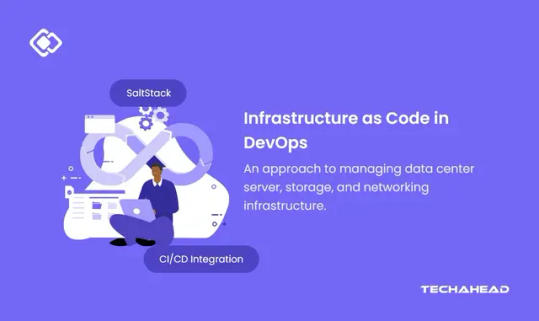
DevOps has undoubtedly been one of the most transformative trends in the development industry in recent years. Currently, there are thousands of DevOps job openings listed in the US. 74% of companies, including giants like Amazon, Facebook, Netflix, Walmart, and NASA, have already embraced DevOps practices.
The global Infrastructure as Code (IaC) market was valued at $0.8 billion in 2022 and is expected to surge to $2.3 billion by 2027, experiencing a compound annual growth rate (CAGR) of 24% during this period.
A core principle of DevOps is maximizing automation, which naturally extends to infrastructure management. Embracing Infrastructure as Code in DevOps is essential to fully align with the DevOps methodology.
Infrastructure as Code (IaC) is a software engineering practice that enables the management and provisioning of infrastructure resources through code. This involves writing code to define and configure components like virtual machines, networks, storage, and other resources required for systems or applications.
With IaC, teams no longer manually set up infrastructure through graphical interfaces or command-line inputs. Instead, they write configurations in code, using declarative languages or configuration files. They can version, review, and test this code like any other software.
This approach marks a major shift in IT infrastructure management. Traditionally, configuring servers, networks, and storage was time-intensive and prone to errors. However, Infrastructure as Code in DevOps has streamlined this process, reducing manual effort and enhancing consistency.
Let’s delve deeper into understanding IaC and its benefits to streamline DevOps infrastructure management.
Key Takeaways:
Infrastructure as Code enables the management of IT infrastructure through code, enhancing automation and consistency
IaC eliminates manual configuration, reducing errors and enabling faster environment provisioning
Integrating IaC into CI/CD pipelines ensures infrastructure evolves alongside application code for faster, more reliable deployments
IaC boosts reliability, scalability, disaster recovery, and cost efficiency, making it indispensable for modern DevOps practices
What is Infrastructure as Code?
Infrastructure as Code (IaC) refers to the practice of managing and provisioning IT infrastructure through code. Traditionally, configuring servers, storage, or networks was manual, time-consuming, and prone to errors. With the Infrastructure as Code approach, teams automate these processes, reducing risks and boosting efficiency.
IaC allows developers and IT teams to write code that manages infrastructure just as they would manage software. This means teams version-control, test, and continuously improve the infrastructure just like any application. They create stable environments that are easy to deploy, ensuring consistency and repeatability.
How Does Infrastructure as Code Work in DevOps?
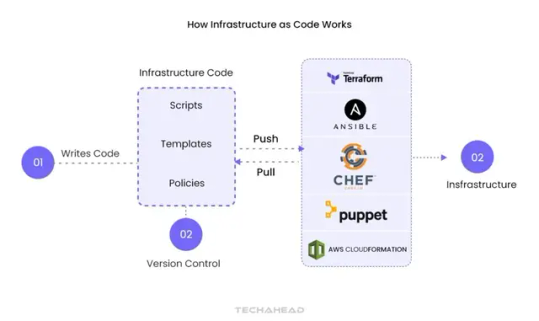
In a DevOps or DevSecOps environment, the Infrastructure as Code approach is key to automating and managing infrastructure with precision. By treating infrastructure as code, organizations can achieve higher efficiency, scalability, and security across their IT operations. Let’s dive deeper into each of the stages:
Infrastructure Definition
Here, teams write all components of the infrastructure, such as virtual machines, databases, and network settings, as code. Instead of manual configuration, teams use high-level languages like YAML, JSON, or HCL to describe these elements. This allows developers to define the exact infrastructure requirements consistently. A well-defined infrastructure through code means that environments can be replicated across development, testing, and production without discrepancies, ensuring consistency and reducing the likelihood of errors.
Versioning
One of the biggest advantages of the Infrastructure as Code is the ability to version control the infrastructure. Using platforms like Git, teams can store their infrastructure code in repositories. This brings traceability, as every change is tracked, and you can see who made it, when, and why. Versioning also empowers teams to roll back to previous configurations if something goes wrong during updates or deployments. This ensures stability and gives teams the confidence to make frequent changes without fear of breaking infrastructure.
Automated Provisioning
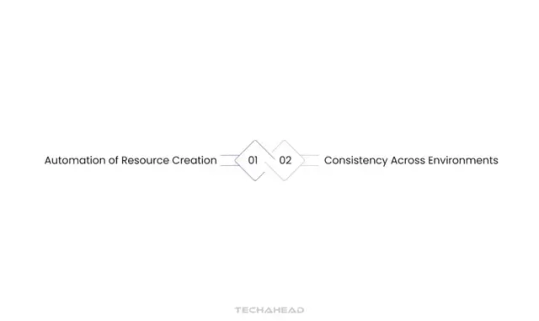
When it comes to provisioning infrastructure, tools like Terraform, AWS CloudFormation, or Ansible play a crucial role. They read the code that defines the infrastructure and automatically create the necessary resources. Whether it’s launching servers, setting up databases, or configuring entire networks, these tools automate every step. This eliminates manual setup, reducing human errors and speeding up deployment times. Automated provisioning also ensures that the infrastructure is consistently deployed across different environments, maintaining reliability.
CI/CD Integration
In modern DevOps practices, infrastructure must keep up with the fast pace of software releases. With Infrastructure as Code, integration with Continuous Integration/Continuous Deployment (CI/CD) pipelines is seamless. As developers push updates to the application code, the corresponding infrastructure changes can also be tested and deployed automatically. This means that infrastructure evolves alongside the application, staying up-to-date and scalable. The automation in CI/CD pipelines ensures faster, more reliable deployments, enabling businesses to rapidly adapt to changes or scale their infrastructure as needed.
By leveraging Infrastructure as Code, organizations can not only automate infrastructure provisioning but also create resilient, scalable, and secure environments that evolve effortlessly with their applications.
Benefits of IaC in DevOps
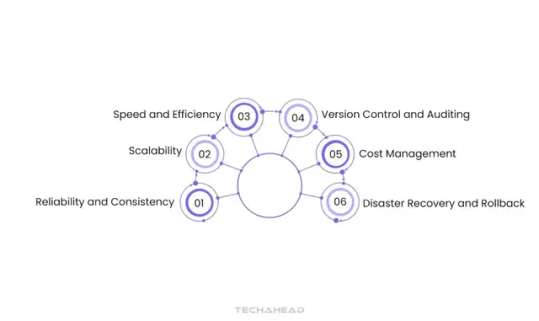
The Infrastructure as Code (IaC) model offers transformative benefits in the DevOps lifecycle. Let’s explore these advantages further in detail:
Reliability and Consistency
One of the primary challenges in traditional IT environments is inconsistent configurations across various environments, such as development, testing, and production. With IaC, infrastructure is written as code, ensuring that the same configuration is applied consistently. This eliminates environment-specific bugs and ensures uniform behavior across all stages. It addresses the “it works on my machine” issue, where an application behaves correctly in development but fails in other environments. By standardizing configurations, IaC reduces errors and enhances system stability over time.
Scalability
IaC makes scaling infrastructure remarkably simple. In a traditional setup, scaling meant manually adding resources like servers, storage, or network configurations—a process that could take hours or days. With IaC, this is achieved by updating the code. Whether scaling up for increased workloads or scaling down during periods of lower demand, these changes can be made instantly. Tools like Terraform or AWS CloudFormation ensure that the infrastructure dynamically adapts based on changes in the code, allowing businesses to scale rapidly without delays or errors.
Speed and Efficiency
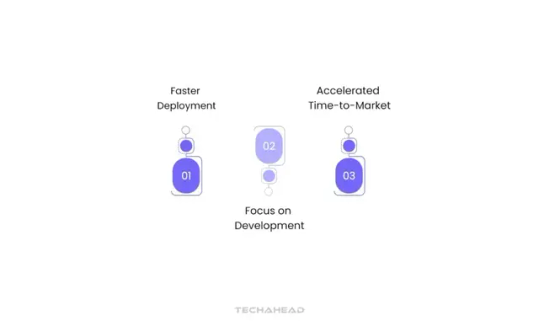
IaC accelerates the deployment process. Traditionally, setting up infrastructure involved multiple manual tasks—configuring servers, installing software, and managing network settings—all of which could take significant time. IaC automates these steps, enabling the infrastructure to be provisioned in minutes, not days. This allows development teams to focus on building and deploying applications rather than managing infrastructure. The increased speed and reduced overheads lead to more rapid development cycles and faster time-to-market.
Version Control and Auditing
Every infrastructure change is recorded in version control systems (VCS) like Git. This means that every modification—whether it’s adding a server or tweaking a network configuration—is documented and traceable. Teams can see exactly who made what change and when. This level of transparency helps in auditing and troubleshooting. Additionally, in the event of a problem, teams can revert to a previous version of the infrastructure with ease, minimizing risks during updates or deployments.
Disaster Recovery and Rollback
In the event of a failure, the recovery process is vastly simplified with IaC. If an infrastructure change leads to unexpected issues, teams can easily roll back to the last known stable version of the infrastructure code stored in the version control system. This rollback capability is crucial for minimizing downtime and preventing prolonged disruptions. IaC ensures faster recovery and improves resilience, making it a powerful tool in disaster recovery planning.
Cost Management
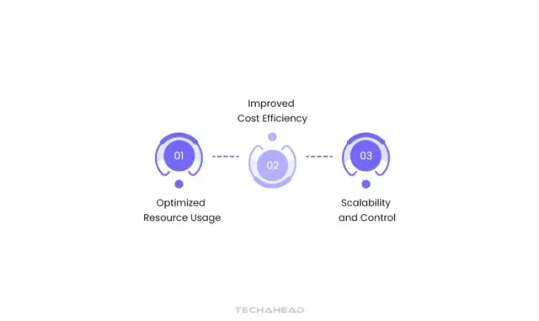
Effective resource management is critical for cost control, especially in cloud computing. IaC allows organizations to create temporary environments for specific tasks, such as testing new features. Once testing is completed, these environments can be automatically de-provisioned to avoid incurring unnecessary costs. This level of flexibility ensures that resources are only utilized when necessary, optimizing cloud spending and preventing resource wastage. The ability to automate provisioning and decommissioning through code significantly enhances cost efficiency.
Overall, the Infrastructure as Code approach drives consistency, efficiency, and scalability across IT operations, making it indispensable for modern DevOps practices. It empowers teams to innovate faster while maintaining robust control over infrastructure, ensuring that businesses can scale seamlessly and respond quickly to changing demands.
Common Tools for Infrastructure as Code

DevOps team rely on four main types of Infrastructure as Code in DevOps tools to streamline operations. Each tool serves a distinct purpose in automating and managing infrastructure.
Configuration Management Tools
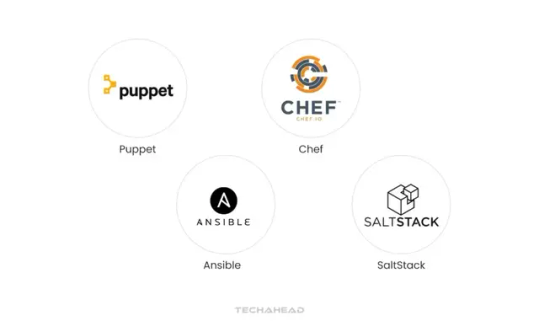
Configuration management tools focus on automating software installation and managing configurations on existing servers. By ensuring uniform setups across all servers, they eliminate manual errors and configuration drifts.
Puppet
Puppet shares many similarities with Chef, standing out among Infrastructure as Code in DevOps tools. It’s integral to countless CI/CD pipelines that DevOps engineers rely on. Puppet uses a Domain Specific Language (DSL) based on Ruby, allowing you to declare the desired state of your infrastructure and its functionalities. It then automatically determines the most efficient path to achieve the specified configuration.
If there are any deviations from this desired state, Puppet actively monitors and corrects these changes, restoring the infrastructure to its intended setup. This powerful open-source solution supports major cloud platforms like Google Cloud Platform (GCP), Microsoft Azure, and Amazon Web Services (AWS), enabling seamless automation across diverse environments.
Key Features:
Puppet employs a Ruby DSL for defining system configurations, making scripting more intuitive and powerful.
It offers an extensive module library through Puppet Forge, enhancing functionality and customization.
Puppet’s idempotent nature ensures that applying a configuration repeatedly yields consistent results, boosting stability.
Chef
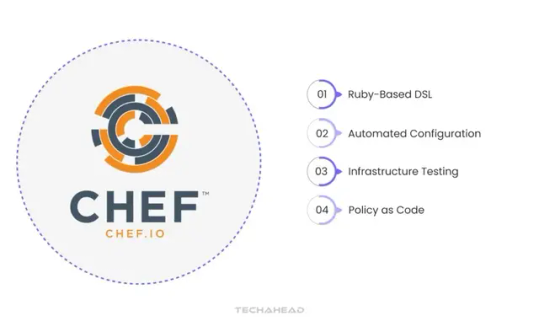
Chef is a powerful automation platform that converts Infrastructure as Code in DevOps into reality. It enables the automation of building, deploying, and managing IT infrastructure, providing organizations with precise control over configurations. This control drives greater agility and operational efficiency in IT processes, empowering teams to innovate rapidly.
Key Features:
Chef utilizes a Ruby-based DSL to script system configurations, streamlining the automation process.
It automated server configuration and deployment, reducing manual intervention and potential errors.
Chef supports infrastructure testing with tools like ChefSpec and InSpec, ensuring reliable code quality.
Policy as Code: It allows teams to define policies and configurations as code, enhancing transparency and consistency across deployments,
Ansible
Ansible serves as a versatile IT automation engine, ideal for application deployment, configuration management, and orchestration tasks. Although not a traditional Infrastructure as Code in DevOps tool, ANsible’s adaptability allows it to provision IaC resources using various collections. This capability bridges the gap between IT automation and IaC, offering a unified approach to managing both software and infrastructure with a single toolset.
Key Features:
Ansible operates without requiring agents on target nodes, simplifying the automation process.
YAML-based automation: It leverages YAML to define tasks, making configurations straightforward and readable.
Modular design: Ansible’s modular structure supports reusable modules, enhancing flexibility for diverse automation scenarios.
SaltStack
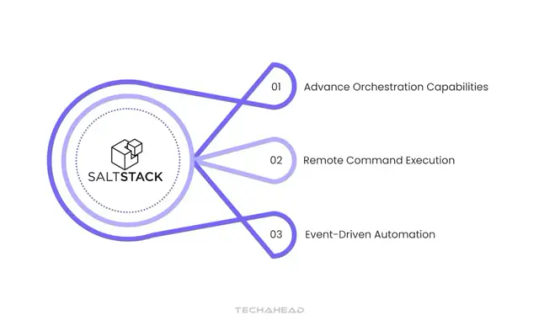
SaltSTack, commonly referred to as Salt, is a robust Python-based tool specializing in Infrastructure as Code in DevOps. It’s designed for efficient configuration management and remote command execution, excelling in both Cloud engineering and on-premises environments.
Key Features:
Advance Orchestration Capabilities: SaltStack supports intricate orchestration and configuration management across diverse environments, ensuring seamless infrastructure automation.
Remote Command Execution: It allows direct command execution on remote systems, streamlining control over distributed infrastructure.
Event-Driven Automation: SaltStack reacts to various system events, triggering automated responses to ensure dynamic and responsive infrastructure management.
Server Templating Tools
Server templating tools allow teams to create reusable templates that define a server’s configuration. These templates act as blueprints, standardizing how new servers are built and ensuring they meet predefined specifications.
Vagrant
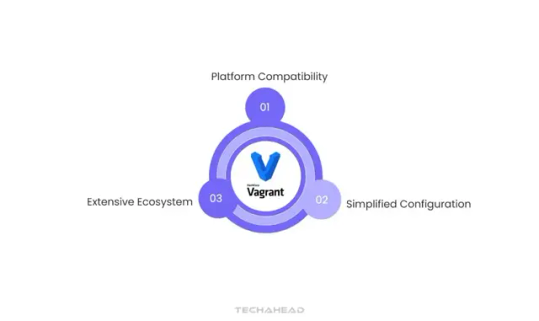
Vagrant streamlines the creation and management of virtual machines, enhancing Infrastructure as Code in DevOps practices by ensuring consistent environments. It allows DevOps engineers to easily share VM setups, promoting seamless collaboration and reducing environment-related issues.
Key Features:
Platform Compatibility: Integrates with VirtualBox, VMware, Docker, AWS, and other major platforms for versatile virtual machine deployment.
Simplified Configuration: Uses a straightforward Vagrantfile to define and configure environments, making setup intuitive and user-friendly.
Extensive Ecosystem: Offers a variety of preconfigured boxes for different operating systems, accelerating deployment with ready-to-use templates.
Orchestration Tools
Orchestration tools manage the coordination between different infrastructure components, ensuring seamless interactions in complex environments. They help
Automate workflows
Enabling multiple services to communicate
Work together efficiently
Kubernetes
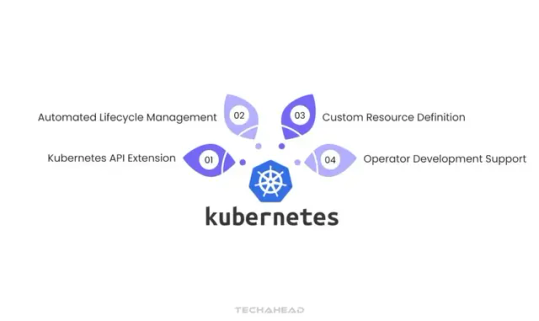
Kubernetes act as specialized controllers that expand the Kubernetes API to handle complex stateful applications, advancing Infrastructure as Code in DevOps. Major cloud platforms like AWS, Microsoft Azure, Google Cloud, and Oracle Cloud Infrastructure offer tailored K8s operators to efficiently provision infrastructure resources.
Key Features:
Kubernetes API Extension: Enhances the Kubernetes API to manage specific application needs, improving operational flexibility.
Automated Lifecycle Management: Simplifies the management of complex stateful applications, ensuring seamless operation within Kubernetes clusters.
Custom Resource Definition: Empowers teams to create and manage custom resources in Kubernetes, boosting control over infrastructure setups.
Operator Development Support: Facilities building new operators, promoting innovation in infrastructure automation.
Provisioning Tools
Provisioning tools focus on the initial creation and configuration of infrastructure components like servers, networks, and storage. They automate the setup process, ensuring a faster and more reliable infrastructure deployment.
Terraform
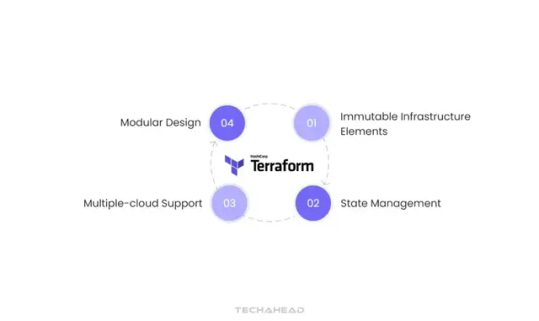
Terraform stands as a leading tool in Infrastructure as Code in DevOps, enabling seamless infrastructure management across multiple cloud platforms using a straightforward declarative language.
Key Features:
Immutable Infrastructure Elements: Ensures consistent configurations, reducing the risk of drift in infrastructure settings.
State Management: Tracks infrastructure state to maintain stability and manage resource dependencies efficiently.
Multiple-cloud Support: Offers compatibility with various cloud providers, enabling diverse infrastructure management.
Modular Design: Promotes reusability and efficiency by allowing the creation of modular code components.
AWS CloudFormation
AWS CloudFormation offers a unified approach to defining and provisioning infrastructure within AWS cloud services, leveraging Infrastructure as Code in DevOps to streamline cloud resource management. This service, tailored exclusively for AWS, ensures a smooth and automated deployment experience, keeping pace with AWS’s latest features and services.
Key Features:
AWS Integration: Seamlessly aligns with AWS services, delivering optimizing support for a wide range of resources.
Declarative Templates: Utilizes JSON or YAML formats to simplify infrastructure definitions.
Change Management: Offers preview capabilities to assess and manage changes before applying them to your infrastructure.
Stack Organization: Groups resources into manageable stacks, enhancing clarity and ease of resource handling.
Comprehensive Resource Support: Extensively support AWS resources, ensuring compatibility with the latest offerings.
These tools play a critical role in Infrastructure as Code in DevOps, enhancing automation, efficiency, and consistency in managing IT infrastructure. They empower teams to build, deploy, and scale environments effortlessly, driving innovation and accelerating development cycles.
Best Practices for Implementation of IaC in DevOps
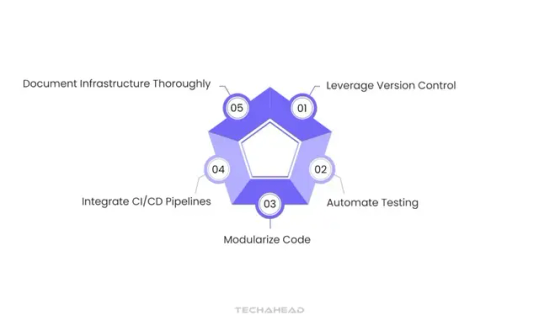
Let’s delve deeper into the best practices for implementing Infrastructure as Code in DevOps, enhancing each point to maximize its effectiveness in a DevOps environment:
Leverage Version Control
Integrating IaC configurations into version control systems like Git is crucial. This practice not only prevents rework by storing every infrastructure update but also provides a clear audit trail of changes. It allows multiple team members to collaborate seamlessly, managing access, tracking revisions, and rolling back to a previous state if needed. Version control acts as both a safeguard and a robust change management system
Automate Testing
Automated testing is vital to maintaining the integrity of your infrastructure setup. Use tools like Terratest to test Terraform modules or AWS Config to check resource compliance against best practices. Automated tests catch issues early, preventing faulty configurations from disrupting deployments. By validating infrastructure before it’s deployed, you ensure that changes won’t lead to instability or errors in production environments.
Modularize Code
Modularization means breaking IaC code into distinct, reusable components. Instead of having a monolithic script, create small, independent modules that focus on specific tasks. This modular approach simplifies updates since you only need to modify individual parts without affecting the entire codebase. It also promotes code reusability, making it easier to scale your infrastructure by reusing proven modules.
Integrate CI/CD Pipelines
Integrating IaC into your CI/CD pipeline is essential for the continuous delivery of infrastructure changes. By embedding testing, validation, and deployment of IaC into the CI/CD process, you ensure that the infrastructure code is automatically validated before deployment. This integration keeps infrastructure and application code in sync, reducing discrepancies and accelerating delivery cycles.
Document Infrastructure Thoroughly
Comprehensive documentation is the backbone of effective Infrastructure as Code in DevOps. Detailing configurations, architectural decisions, and setup procedures aids in knowledge sharing across the team. Proper documentation simplifies troubleshooting and onboarding, helping new team members understand the infrastructure’s architecture and its dependencies quickly.
Implementing these best practices fortifies Infrastructure as Code in DevOps by enhancing collaboration, minimizing risks, and ensuring scalable and consistent deployments. This structured approach to managing IT infrastructure accelerates development cycles and drives innovation in dynamic cloud environments.
Conclusion
Infrastructure as Code (IaC) has significantly reshaped the way DevOps operates. It empowers teams to manage IT infrastructure with the same speed and precision as software development—using automation for consistent results. This approach enables organizations to streamline processes, creating scalable and efficient workflows while managing their infrastructure with ease. This strategy is particularly crucial for Infrastructure as Code in DevOps, especially in web application development, where rapid delivery and infrastructure reliability are non-negotiable.
In this DevOps landscape, employing Infrastructure as Code in DevOps ensures that teams build high-quality applications while maintaining a resilient, scalable, and secure infrastructure. By adopting the right tools and following best practices, teams can harness IaC to create and manage infrastructures that support swift software delivery cycles.
Relying on IaC isn’t just an option in today’s agile, cloud-first environment; it’s essential for staying competitive. If you’re a DevOps professional yet to incorporate Infrastructure as Code in DevOps into your workflow, now is the time to act.
Have a web or mobile app development project that demands expert developers? Connect with us for a free technical consultation.
Source URL: https://www.techaheadcorp.com/blog/infrastructure-as-code-iac-in-devops-the-key-to-streamlined-devops-infrastructure-management/#h-common-tools-for-infrastructure-as-code
0 notes
Text
The Rising Impact of Cloud Computing and DevOps Companies in India

The digital transformation era has ushered in unprecedented growth for various technological sectors in India. Among these, cloud computing, AWS development and DevOps have seen remarkable advancements, driving innovation and efficiency across industries. This article delves into the burgeoning landscape of these technologies in India, highlighting their significance and growth.
Cloud Computing: A Catalyst for Digital Transformation
Cloud computing has become a cornerstone for businesses seeking agility, scalability and cost efficiency. Indian companies are leveraging cloud technologies to streamline operations, enhance productivity and drive innovation. Leading cloud computing companies in India, such as Tata Consultancy Services (TCS), Infosys and Wipro, are at the forefront of delivering comprehensive cloud solutions. These companies offer a range of services, including infrastructure as a service (IaaS), platform as a service (PaaS) and software as a service (SaaS), catering to diverse business needs.
AWS Development: Empowering Businesses with Robust Solutions
Amazon Web Services (AWS) has emerged as a dominant force in the cloud computing arena, providing scalable and reliable cloud solutions. In India, AWS development is witnessing significant traction, with numerous companies specializing in AWS-based services. These companies offer expertise in cloud migration, application development, data analytics and managed services. The robust AWS infrastructure enables businesses to innovate rapidly, reduce time-to-market and optimize costs. Companies like Cognizant, HCL Technologies and Tech Mahindra are leading the charge in AWS development in India, helping enterprises harness the full potential of AWS.
DevOps: Bridging the Gap Between Development and Operations
DevOps practices have revolutionized the software development lifecycle by fostering collaboration between development and operations teams. In India, DevOps companies are playing a crucial role in accelerating software delivery, improving quality and enhancing customer satisfaction. These companies provide a range of DevOps services, including continuous integration and continuous deployment (CI/CD), infrastructure as code (IaC) and automated testing. Notable DevOps companies in India, such as Accenture, Capgemini and Zensar Technologies, are empowering businesses to achieve faster release cycles, higher efficiency and greater agility.
Conclusion: The Future of Cloud, AWS and DevOps in India
The rapid growth of cloud computing, AWS development and DevOps in India signifies the country's pivotal role in the global technology landscape. These technologies are not only transforming businesses but also driving economic growth and innovation. As organizations continue to embrace digital transformation, the demand for skilled professionals and specialized companies in these domains is set to rise.
BuzzyBrains, a prominent player in this field, exemplifies the innovative spirit of Indian tech companies. Specializing in cloud computing, AWS development and DevOps, BuzzyBrains delivers cutting-edge solutions that help businesses stay ahead in a competitive market. With a commitment to excellence and a focus on customer success, BuzzyBrains is shaping the future of technology in India.
In summary, the synergy of cloud computing, AWS development and DevOps is creating a dynamic ecosystem that promises sustained growth and innovation for Indian businesses. As these technologies continue to evolve, India remains poised to be a global leader in digital transformation.
#cloud computing services in india#aws development india#buzzybrains software#devops development company#devops companies in india
0 notes
Text
https://www.sifytechnologies.com/digital-services/app-modernization/

Revolutionizing Business with Sify's App Modernization Services
In today's rapidly evolving digital landscape, businesses must stay ahead of the curve to remain competitive. Legacy applications, once the backbone of many organizations, now often hinder innovation and agility. Sify Technologies understands this challenge and offers comprehensive App Modernization services designed to transform outdated applications into agile, efficient, and scalable solutions.
The Imperative for App Modernization
As technology progresses, legacy systems can become a significant liability. These systems may struggle to integrate with new technologies, suffer from security vulnerabilities, and incur high maintenance costs. Moreover, they can impede an organization’s ability to innovate and respond swiftly to market demands. App Modernization is essential for businesses aiming to enhance operational efficiency, reduce costs, and deliver superior customer experiences.
Sify's Comprehensive App Modernization Approach
Sify’s App Modernization services are tailored to meet the unique needs of each business. By leveraging cutting-edge technologies and industry best practices, Sify ensures a seamless transformation of legacy applications. Here’s how Sify's approach stands out:
Assessment and Strategy Development
In-Depth Analysis: Sify begins with a thorough assessment of the existing application landscape. This involves understanding the current architecture, performance metrics, and business goals.
Customized Roadmap: Based on the assessment, Sify develops a detailed modernization strategy. This roadmap outlines the necessary steps, timelines, and technologies required to achieve the desired outcomes.
Re-Architecting and Re-Engineering
Microservices Architecture: Transitioning monolithic applications to a microservices architecture enhances scalability and agility. This modular approach allows for independent development, deployment, and scaling of application components.
Cloud Enablement: Sify leverages cloud technologies to enhance application performance, availability, and scalability. This includes migrating applications to public, private, or hybrid cloud environments.
Technology Upgradation
Adoption of Modern Tech Stacks: Sify upgrades legacy applications to modern tech stacks, incorporating the latest frameworks, languages, and tools. This ensures improved performance, security, and maintainability.
Integration with Emerging Technologies: Sify integrates applications with emerging technologies such as AI, IoT, and blockchain to drive innovation and deliver new capabilities.
Automation and DevOps Implementation
CI/CD Pipelines: Implementing Continuous Integration and Continuous Deployment (CI/CD) pipelines accelerates development cycles and ensures faster time-to-market.
Infrastructure as Code (IaC): Sify utilizes IaC to automate infrastructure provisioning and management, enhancing consistency and reducing errors.
Security and Compliance
Robust Security Measures: Sify incorporates advanced security practices throughout the modernization process, ensuring that applications are safeguarded against threats and vulnerabilities.
Compliance Adherence: Sify ensures that modernized applications comply with industry-specific regulations and standards, mitigating risks and ensuring regulatory compliance.
Success Stories
Sify’s App Modernization services have empowered numerous businesses across various industries. For instance, a leading financial services company partnered with Sify to modernize its core banking applications. By transitioning to a microservices architecture and migrating to the cloud, the company achieved a 40% reduction in operational costs and a 50% improvement in application performance.
Similarly, a global retail giant leveraged Sify’s expertise to modernize its e-commerce platform. The integration of AI-driven analytics and seamless cloud migration resulted in a 30% increase in customer engagement and a 25% boost in sales.
Why Choose Sify?
Proven Expertise: With decades of experience in IT services, Sify possesses deep domain knowledge and technical expertise.
End-to-End Solutions: Sify offers comprehensive end-to-end modernization services, ensuring a seamless transition from legacy to modern systems.
Customer-Centric Approach: Sify places customer satisfaction at the forefront, delivering solutions that align with business goals and drive measurable outcomes.
Innovation and Agility: Sify’s commitment to innovation ensures that clients benefit from the latest technologies and methodologies, fostering agility and competitiveness.
In an era where digital transformation is paramount, Sify’s App Modernization services provide businesses with the tools and expertise needed to revitalize legacy applications. By embracing modernization, organizations can unlock new opportunities, enhance operational efficiency, and stay ahead in the competitive landscape. Partner with Sify to embark on a transformative journey and future-proof your business.
0 notes
Text
Streamlining Operations with Red Hat Ansible Automation Platform
In today's fast-paced digital landscape, businesses are constantly seeking ways to enhance operational efficiency, reduce costs, and improve agility. Automation has emerged as a transformative force, empowering organizations to streamline repetitive tasks, accelerate processes, and focus on innovation. Red Hat Ansible Automation Platform stands at the forefront of this revolution, offering a powerful solution to automate IT operations, accelerate productivity, and drive business success.
The Power of Automation
Automation has become indispensable for modern enterprises grappling with complex IT environments. Manual provisioning, configuration management, and deployment processes are not only time-consuming but also prone to errors, leading to downtime and increased operational costs. Red Hat Ansible Automation Platform enables organizations to automate these tasks across hybrid and multicloud environments, driving consistency, reliability, and scalability.
Unified Automation Platform
Red Hat Ansible Automation Platform provides a unified solution for automating IT processes across the entire enterprise. It combines the simplicity and flexibility of Ansible automation with enterprise-grade capabilities, including role-based access control (RBAC), centralized logging, and analytics. Whether automating infrastructure management, application deployment, or network configuration, organizations can leverage Ansible Automation Platform to orchestrate complex workflows with ease.
Infrastructure as Code
Infrastructure as Code (IaC) has revolutionized the way infrastructure is provisioned and managed. With Ansible Automation Platform, organizations can define infrastructure configurations declaratively using simple, human-readable YAML syntax. This approach enables infrastructure to be version-controlled, tested, and deployed reliably, fostering collaboration between development and operations teams. By treating infrastructure as code, organizations can accelerate time-to-market, enhance agility, and mitigate risks.
Intelligent Orchestration
Ansible Automation Platform empowers organizations to orchestrate complex workflows intelligently, leveraging a vast ecosystem of Ansible content and integrations. From automating routine maintenance tasks to orchestrating zero-downtime deployments, Ansible's agentless architecture ensures seamless integration with existing infrastructure components, including servers, networking devices, and cloud services. With Ansible Tower, organizations gain centralized visibility and control over automation workflows, enabling them to monitor, schedule, and audit automation tasks effortlessly.
Accelerating Innovation
By automating mundane tasks and standardizing processes, Red Hat Ansible Automation Platform frees up valuable time and resources for innovation. IT teams can focus on strategic initiatives, such as improving customer experiences, developing new products, or optimizing business processes. Moreover, Ansible's modular architecture and extensibility empower organizations to adapt automation workflows to evolving business requirements, ensuring future-proof scalability and flexibility.
Conclusion
In an era defined by digital transformation and relentless competition, automation has become a strategic imperative for businesses seeking to thrive in the digital age. Red Hat Ansible Automation Platform offers a comprehensive solution for automating IT operations, empowering organizations to streamline processes, accelerate innovation, and drive business agility. Whether you're a small startup or a global enterprise, Ansible Automation Platform provides the tools and capabilities needed to unlock the full potential of automation and propel your organization forward.
Discover the power of automation with Red Hat Ansible Automation Platform and unleash the full potential of your IT infrastructure.
For more details click www.qcsdclabs.com
#linux#ansible#redhatcourses#redhatlinux#information technology#automation#ansibleautomation#qcsdclabs#redhat
0 notes
Text
Infrastructure as Code Market Share, Size and Forecast to 2030
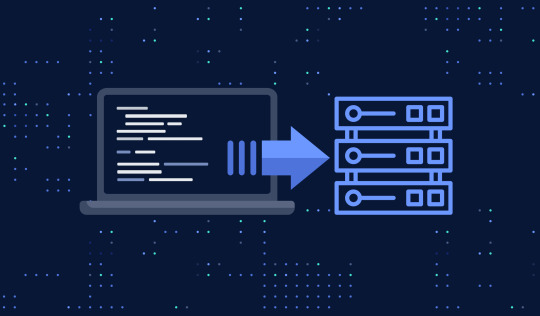
The Latest research coverage on Infrastructure as Code Market provides a detailed overview and accurate market size. The study is designed considering current and historical trends, market development and business strategies taken up by leaders and new industry players entering the market. Furthermore, study includes an in-depth analysis of global and regional markets along with country level market size breakdown to identify potential gaps and opportunities to better investigate market status, development activity, value and growth patterns. Access Sample Report + All Related Graphs & Charts @: https://marketresearchforecast.com/report/infrastructure-as-code-market-1806/sample-report
Major & Emerging Players in Infrastructure as Code Market:- Microsoft Corporation (U.S.),HashiCorp, Inc. (U.S.),Snyk Limited (U.S.),Cisco Systems, Inc. (U.S.),Amazon Web Services, Inc. (U.S.),Zscaler, Inc. (U.S.),Progress Software Corporation (Chef) (U.S.),Red Hat, Inc. (U.S.),Pulumi Corporation (U.S.),Hewlett Packard Enterprise Development LP (U.S.). The Infrastructure as Code Market Study by Market Research Forecast gives an essential tool and source to Industry stakeholders to figure out the market and other fundamental technicalities, covering growth, opportunities, competitive scenarios, and key trends in the Infrastructure as Code Market. The Infrastructure as Code Market size was valued at USD 759.1 USD Million in 2023 and is projected to reach USD 2767.95 USD Million by 2032, exhibiting a CAGR of 20.3 % during the forecast period. Using Infrastructure as Code (IaC), the IaC market makes facilities managed via machine-readable definition files eliminating the need for human factors. Hence it provides more scalable and consistent operations. It is crucial for modern cloud computing, DevOps, and code streaming, allowing fast and highly available release of applications and services without redundancy and delays. IAC offers virtual machines and the ability to create containerization, networks, and load balancers as well as databases and monitoring systems, both in Cloud and on-premises settings. Important changes are seen in the form of declarative methods (Terraform), integrating with CI/CD pipelines and now GitOps philosophy is deployed. The market is increasingly steadily expanding as organizations look to incorporate particularly agile yet automated infrastructure management systems in modern IT processing.
The titled segments and sub-section of the market are illuminated below: by Deployment (Cloud-based and On-premises), by Infrastructure Type (Mutable Infrastructure and Immutable Infrastructure), by Approach (Imperative and Declarative), by End-user (BFSI, Retail, Government, Manufacturing, IT & Telecom, Healthcare, and Others), by North America (U.S., Canada, Mexico), by Europe (U.K., Germany, France, Italy, Spain, Russia, Benelux, Nordics, Rest of Europe), by Asia Pacific (China, Japan, India, South Korea, ASEAN, Oceania, Rest of Asia Pacific), by Middle East & Africa (Turkey, Israel, GCC, North Africa, South Africa, Rest of the Middle East & Africa), by South America Brazil Argentina Rest of South America (, ) Forecast 2024-2032 Market Trends: Rise of cloud computing and containerization
Automation and simplification of infrastructure management
Increased focus on security and compliance
Growing adoption of open-source IaC tools
Challenges: Security concerns
Lack of standardization
Integration with legacy systems
Limited skilled workforce Enquire for customization in Report @: https://marketresearchforecast.com/report/infrastructure-as-code-market-1806/enquiry-before-buy Some Point of Table of Content: Chapter One: Report Overview Chapter Two: Global Market Growth Trends Chapter Three: Value Chain of Infrastructure as Code Market Chapter Four: Players Profiles Chapter Five: Global Infrastructure as Code Market Analysis by Regions Chapter Six: North America Infrastructure as Code Market Analysis by Countries Chapter Seven: Europe Infrastructure as Code Market Analysis by Countries Chapter Eight: Asia-Pacific Infrastructure as Code Market Analysis by Countries Chapter Nine: Middle East and Africa Infrastructure as Code Market Analysis by Countries Chapter Ten: South America Infrastructure as Code Market Analysis by Countries Chapter Eleven: Global Infrastructure as Code Market Segment by Types Chapter Twelve: Global Infrastructure as Code Market Segment by Applications What are the market factors that are explained in the Infrastructure as Code Market report?
– Key Strategic Developments: Strategic developments of the market, comprising R&D, new product launch, M&A, agreements, collaborations, partnerships, joint ventures, and regional growth of the leading competitors.
– Key Market Features: Including revenue, price, capacity, capacity utilization rate, gross, production, production rate, consumption, import/export, supply/demand, cost, market share, CAGR, and gross margin.– Analytical Tools: The analytical tools such as Porter’s five forces analysis, SWOT analysis, feasibility study, and investment return analysis have been used to analyze the growth of the key players operating in the market. Buy This Exclusive Research Here: https://marketresearchforecast.com/report/infrastructure-as-code-market-1806/checkout?type=corporate Definitively, this report will give you an unmistakable perspective on every single reality of the market without a need to allude to some other research report or an information source. Our report will give all of you the realities about the past, present, and eventual fate of the concerned Market. Thanks for reading this article; you can also get individual chapter wise section or region wise report version like North America, Europe or Asia. Contact US : Craig Francis (PR & Marketing Manager) Market Research Forecast Unit No. 429, Parsonage Road Edison, NJ New Jersey USA – 08837 Phone: +1 201 565 3262, +44 161 818 8166 [email protected]
#Global Infrastructure as Code Market#Infrastructure as Code Market Demand#Infrastructure as Code Market Trends#Infrastructure as Code Market Analysis#Infrastructure as Code Market Growth#Infrastructure as Code Market Share#Infrastructure as Code Market Forecast#Infrastructure as Code Market Challenges
0 notes
Text
The Complete Guide to AWS DevOps Engineer Certification Training, Mastering DevOps in the Cloud
Introduction:
In the fast-paced world of IT, where agility and efficiency reign supreme, the adoption of DevOps practices has become indispensable for organizations aiming to stay ahead of the curve. And when it comes to implementing DevOps in the cloud, Amazon Web Services (AWS) stands out as a leading platform of choice. AWS offers a suite of robust tools and services tailored for DevOps, empowering professionals to streamline software delivery, enhance collaboration, and drive continuous improvement.
If you're looking to validate your expertise in AWS DevOps and elevate your career prospects, pursuing the AWS DevOps Engineer Certification is a strategic move. This comprehensive certification not only validates your technical proficiency but also equips you with the skills needed to architect, build, and operate applications on AWS using DevOps principles and best practices.
Understanding AWS DevOps Certification
The AWS DevOps Engineer Certification is designed for professionals who possess experience in both development and operations roles and are proficient in deploying and managing applications on the AWS platform. This certification validates your ability to automate key processes, implement continuous integration and continuous delivery (CI/CD), and utilize AWS services to optimize resource utilization and scalability.
Why Pursue AWS DevOps Certification?
1. Industry Recognition:
Achieving AWS DevOps certification demonstrates your commitment to mastering DevOps practices on one of the most widely adopted cloud platforms globally. It serves as a testament to your expertise and can significantly enhance your credibility in the eyes of employers and peers.
2. Career Advancement:
In today's competitive job market, AWS DevOps certification can set you apart from the crowd and open doors to lucrative career opportunities. DevOps engineers are in high demand as organizations seek to accelerate their software delivery pipelines and improve operational efficiency.
3. Mastery of AWS Tools and Services:
Through the certification process, you'll gain in-depth knowledge of various AWS tools and services essential for implementing DevOps practices effectively. From AWS CodePipeline and AWS CodeDeploy to AWS CloudFormation and AWS Elastic Beanstalk, you'll become proficient in leveraging these services to automate infrastructure provisioning, deployment, and management.
4. Hands-On Experience:
The AWS DevOps certification training is highly practical, allowing you to apply theoretical concepts to real-world scenarios. You'll work on hands-on labs, case studies, and projects that simulate common DevOps challenges, giving you the confidence and expertise needed to excel in your role.
What Does the AWS DevOps Certification Training Cover?
1. AWS Fundamentals:
The training begins with an overview of essential AWS concepts and services, ensuring you have a solid understanding of the AWS cloud platform's fundamentals.
2. DevOps Principles:
You'll delve into the core principles of DevOps, including collaboration, automation, continuous integration, continuous delivery, and infrastructure as code (IaC).
3. CI/CD Pipelines:
Learn to design, implement, and manage CI/CD pipelines using AWS services such as AWS CodePipeline, AWS CodeBuild, and AWS CodeDeploy.
4. Infrastructure as Code (IaC):
Master the art of defining and managing infrastructure using code with AWS CloudFormation, Terraform, and other IaC tools.
5. Monitoring and Logging:
Explore how to monitor application performance, collect and analyze logs, and leverage AWS services like Amazon CloudWatch for proactive monitoring and troubleshooting.
6. Security Best Practices:
Understand security best practices for DevOps in the cloud, including identity and access management (IAM), encryption, compliance, and security automation.
Tips for Success in AWS DevOps Certification Training
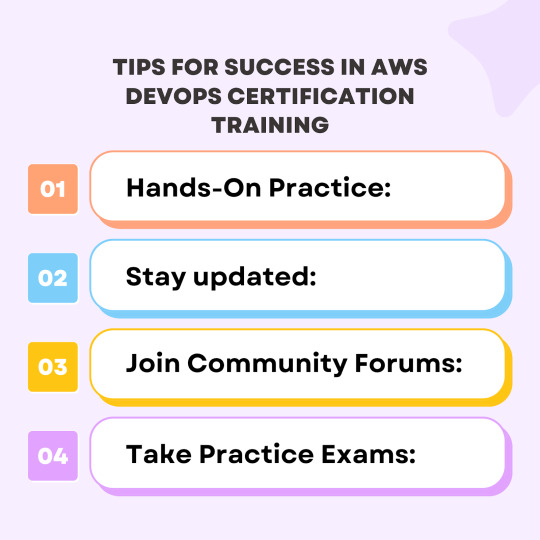
1. Hands-On Practice:
Don't just rely on theoretical knowledge. Practice implementing DevOps workflows and utilizing AWS services in real-world scenarios to solidify your understanding.
2. Stay updated:
The cloud landscape evolves rapidly, so stay updated with the latest AWS services, features, and best practices through blogs, forums, and official AWS documentation.
3. Join Community Forums:
Engage with the AWS community by participating in forums, user groups, and online discussions. Networking with fellow professionals can provide valuable insights and support throughout your certification journey.
4. Take Practice Exams:
Familiarize yourself with the exam format and assess your readiness by taking practice exams and quizzes. Identify areas where you need improvement and focus your study efforts accordingly.
Conclusion:
Embarking on the journey to become an AWS DevOps Engineer is both challenging and rewarding. By obtaining the AWS DevOps certification, you not only validate your expertise but also position yourself as a valuable asset to organizations seeking to harness the power of DevOps in the cloud. With comprehensive training, hands-on experience, and dedication to continuous learning, you'll be well-equipped to thrive in today's dynamic IT landscape.
Are you ready to take the next step in your DevOps journey? Explore AWS DevOps certification training programs and unlock new opportunities for career growth and success.
0 notes
Text
Getting Certified as an AWS DevOps Engineer with Mastering DevOps
In today's rapidly evolving technological landscape, mastering DevOps is indispensable, especially with the prominence of cloud computing leader Amazon Web Services (AWS). Obtaining certification as an AWS DevOps Engineer can significantly elevate your career prospects. But what does it truly entail to achieve this certification, and is it worth the dedication? Let's delve into the realm of AWS DevOps certification and explore why mastering DevOps holds profound importance for aspiring engineers.
Unraveling AWS DevOps Certification
Deciphering the Essence of AWS DevOps Certification
The AWS DevOps Engineer certification validates one's technical prowess in provisioning, operating, and managing distributed application systems within the AWS framework. It scrutinizes candidates' ability to implement and automate continuous delivery systems and methodologies on AWS.
The Rationale Behind AWS DevOps Certification
Given AWS's dominant position in the cloud services arena, its certifications hold immense value in the eyes of employers globally. As businesses increasingly embrace DevOps to streamline development and operations, the demand for proficient DevOps engineers well-versed in AWS technologies continues to soar. Attaining the AWS DevOps Engineer certification showcases your adeptness in leveraging AWS tools and services to construct and manage scalable, secure, and resilient systems.
Mastering DevOps with AWS: A Prerequisite for Success
Grasping the Significance of DevOps Proficiency
DevOps amalgamates development and operations to foster collaboration, automate processes, and expedite software delivery without compromising quality. Mastery of DevOps principles and practices empowers engineers to enhance workflow efficiency, productivity, and product reliability. Integrating DevOps with AWS services enables organizations to achieve unparalleled agility, scalability, and innovation.
Embracing AWS DevOps Training: The Gateway to Excellence
Becoming a proficient AWS DevOps Engineer necessitates comprehensive training. Online AWS DevOps courses offer a flexible and convenient learning experience, enabling you to acquire skills at your own pace from any location. These courses encompass a diverse array of topics, including:
AWS fundamentals and industry best practices
Infrastructure as Code (IaC) utilizing AWS CloudFormation
Continuous Integration/Continuous Deployment (CI/CD) pipelines employing AWS tools such as AWS CodePipeline and AWS CodeDeploy
Configuration management via AWS OpsWorks and AWS Systems Manager
Monitoring and logging facilitated by Amazon CloudWatch
Implementation of security best practices in AWS environments
FAQs: Your Roadmap to AWS DevOps Certification
Question 1. Which AWS certification is optimal for DevOps?
Answer: The AWS Certified DevOps Engineer - Professional certification is tailored for individuals with experience in both development and operations roles, making it the quintessential choice for DevOps professionals. This certification validates advanced technical competencies in crafting, managing, and automating AWS solutions.
Question 2. Is achieving AWS Certified DevOps Engineer worthwhile?
Answer: Undoubtedly! The AWS Certified DevOps Engineer certification not only bolsters your credibility and marketability but also opens doors to a plethora of exciting career opportunities in high-demand domains. Whether you aspire to advance in your current role or transition into a DevOps career, this certification equips you with the requisite skills and knowledge to thrive in today's technology-driven landscape.
Question 3. How can one become a proficient AWS DevOps engineer?
Answer: Becoming a proficient AWS DevOps engineer necessitates a blend of technical expertise, hands-on experience, and continuous learning. Here are some actionable tips to excel in your DevOps journey:
Hands-on experience: Engage in practical deployment, management, and optimization of AWS solutions in real-world scenarios.
Stay abreast of updates: Keep yourself updated on the latest AWS services, best practices, and industry trends through various resources like blogs, forums, and online courses.
Develop automation skills: Master scripting languages like Python and tools such as AWS CLI to automate tasks and streamline workflows effectively.
Nurture collaboration: Foster strong communication and collaboration skills to collaborate effectively with cross-functional teams.
Pursue continuous improvement: Embrace a mindset of continuous improvement, consistently evaluating and refining your DevOps processes and practices.
In Conclusion
Obtaining certification as an AWS DevOps Engineer not only validates your proficiency in leveraging AWS services to implement and automate DevOps practices but also opens doors to myriad career opportunities. As the demand for skilled DevOps professionals escalates, mastering DevOps with AWS not only augments your career trajectory but also empowers you to drive innovation and efficiency within your organization. Invest in AWS DevOps training, hone your skills, and start on a fulfilling journey toward becoming a proficient AWS DevOps Engineer.
1 note
·
View note
Text
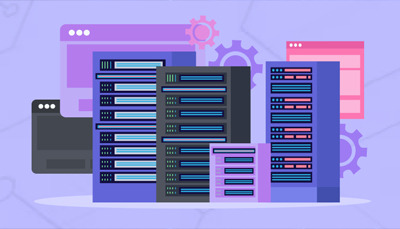
MACH Architecture and Cloud Infrastructure: A Powerful Combination for a New Programme with PII Requirements
The Challenge: was to design and implement an appropriate infrastructure for a new programme with ambiguous specifications and no knowledge of the potential audience. This program aimed to support various global markets with different needs and preferences.
In software delivery, working on a greenfield project is a rare and challenging opportunity. It is exciting because we can design the system ground up without being constrained by the legacy and using business requirements to shape the system. However, it is also daunting because the scale and the boundaries of the project are unclear.
One of the most complex requirements were around PII (Personally Identifiable Information). The rules and the regulations for PII vary significantly among countries, which creates additional complexity and overhead in terms of business rules, implementation and infrastructure.
In addition to the challenges with requirements, being an Agile program, we anticipate many changes and adjustments as the product is used by the consumer. We will iterate and respond to the consumer feedback promptly.
The Solution: was to build a cloud-based application following MACH architecture. MACH is a modern approach to software development that stands for Microservices, API-first, Cloud-native, and Headless.
Cloud infrastructure allowed us to scale up and down easily as needed. This flexibility was crucial, as we had no data on the required infrastructure for the project. Therefore, we started with minimal resources and let the system scale and evolve based on the data we collected. Moreover, we avoided the infrastructure cost when it was not necessary, and only paid for what we used.
Thanks to cloud’s flexibility we could scale in isolation for each region if needed, making the system adaptable for each market. This feature was very beneficial within the context of PII, as we could create fully isolated regions within the same project.
We chose AWS as our primary cloud provider and some parts of the system used Azure because of the business requirements. Fortunately with today’s technology, different cloud providers can work together within the same project.
Akamai, which is a Content Delivery Network (CDN), created our ecosystem with strong security features. Security was very vital, as global reach came with global risks. Akamai’s AI powered and machine learning models protected our system from malicious bot detection to various attack vectors.
Being a small development team, we utilised automation where we could. Using infrastructure as code (IaC), we developed one-click environment creation from scratch, so that the product could be deployed anywhere AWS operates. This feature was especially useful in the context of PII, to comply with local regulations.
For one-click environment creations, we used Terraform with well-defined and documented roles and permissions. Terraform is a tool that allows teams to define and manage infrastructure as code. Terraform also helped us to track changes, and enabled collaboration within the team. As infrastructure was codified we avoided all the ambiguities of manual changes of the settings and configurations which helped us to troubleshoot quickly and efficiently when needed.
Following MACH architecture and utilising the latest cloud technology made this project possible with its small budget, tough timeline and limited resources.
#MACH#aws#cloud#infrastructure as code#leadership#Azure#international#azure#cloud computing#cloud infrastructure
0 notes
Text
Revolutionizing Business with Sify's App Modernization Services
In today’s rapidly evolving digital landscape, businesses must stay ahead of the curve to remain competitive. Legacy applications, once the backbone of many organizations, now often hinder innovation and agility. Sify Technologies understands this challenge and offers comprehensive App Modernization services designed to transform outdated applications into agile, efficient, and scalable solutions.
The Imperative for App Modernization
As technology progresses, legacy systems can become a significant liability. These systems may struggle to integrate with new technologies, suffer from security vulnerabilities, and incur high maintenance costs. Moreover, they can impede an organization’s ability to innovate and respond swiftly to market demands. App Modernization is essential for businesses aiming to enhance operational efficiency, reduce costs, and deliver superior customer experiences.
Sify’s Comprehensive App Modernization Approach
Sify’s App Modernization services are tailored to meet the unique needs of each business. By leveraging cutting-edge technologies and industry best practices, Sify ensures a seamless transformation of legacy applications. Here’s how Sify’s approach stands out:
Assessment and Strategy Development
In-Depth Analysis: Sify begins with a thorough assessment of the existing application landscape. This involves understanding the current architecture, performance metrics, and business goals.
Customized Roadmap: Based on the assessment, Sify develops a detailed modernization strategy. This roadmap outlines the necessary steps, timelines, and technologies required to achieve the desired outcomes.
Re-Architecting and Re-Engineering
Microservices Architecture: Transitioning monolithic applications to a microservices architecture enhances scalability and agility. This modular approach allows for independent development, deployment, and scaling of application components.
Cloud Enablement: Sify leverages cloud technologies to enhance application performance, availability, and scalability. This includes migrating applications to public, private, or hybrid cloud environments.
Technology Upgradation
Adoption of Modern Tech Stacks: Sify upgrades legacy applications to modern tech stacks, incorporating the latest frameworks, languages, and tools. This ensures improved performance, security, and maintainability.
Integration with Emerging Technologies: Sify integrates applications with emerging technologies such as AI, IoT, and blockchain to drive innovation and deliver new capabilities.
Automation and DevOps Implementation
CI/CD Pipelines: Implementing Continuous Integration and Continuous Deployment (CI/CD) pipelines accelerates development cycles and ensures faster time-to-market.
Infrastructure as Code (IaC): Sify utilizes IaC to automate infrastructure provisioning and management, enhancing consistency and reducing errors.
Security and Compliance
Robust Security Measures: Sify incorporates advanced security practices throughout the modernization process, ensuring that applications are safeguarded against threats and vulnerabilities.
Compliance Adherence: Sify ensures that modernized applications comply with industry-specific regulations and standards, mitigating risks and ensuring regulatory compliance.
Success Stories
Sify’s App Modernization services have empowered numerous businesses across various industries. For instance, a leading financial services company partnered with Sify to modernize its core banking applications. By transitioning to a microservices architecture and migrating to the cloud, the company achieved a 40% reduction in operational costs and a 50% improvement in application performance.
Similarly, a global retail giant leveraged Sify’s expertise to modernize its e-commerce platform. The integration of AI-driven analytics and seamless cloud migration resulted in a 30% increase in customer engagement and a 25% boost in sales.
Why Choose Sify?
Proven Expertise: With decades of experience in IT services, Sify possesses deep domain knowledge and technical expertise.
End-to-End Solutions: Sify offers comprehensive end-to-end modernization services, ensuring a seamless transition from legacy to modern systems.
Customer-Centric Approach: Sify places customer satisfaction at the forefront, delivering solutions that align with business goals and drive measurable outcomes.
Innovation and Agility: Sify’s commitment to innovation ensures that clients benefit from the latest technologies and methodologies, fostering agility and competitiveness.
In an era where digital transformation is paramount, Sify’s App Modernization services provide businesses with the tools and expertise needed to revitalize legacy applications. By embracing modernization, organizations can unlock new opportunities, enhance operational efficiency, and stay ahead in the competitive landscape. Partner with Sify to embark on a transformative journey and future-proof your business.
0 notes